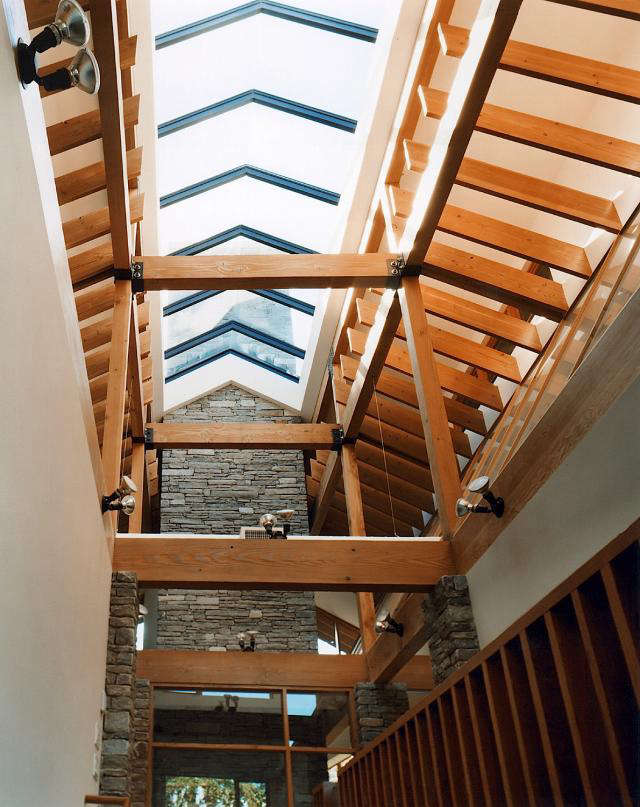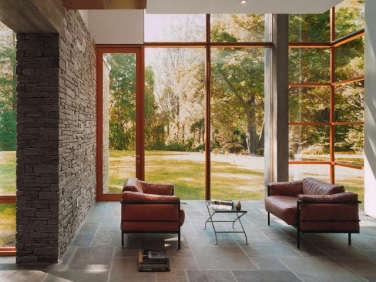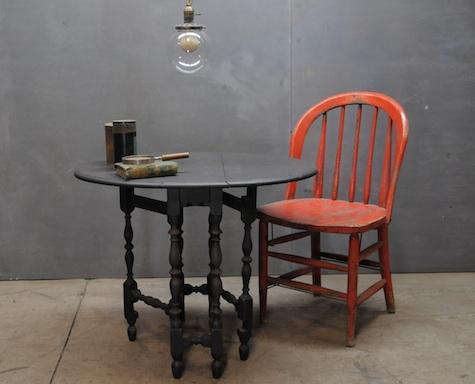The architect has the delicate job of negotiating the elements: how to bring light and air in—and keep the wind, rain, and snow at bay. Mark McInturff brokered the deal creatively on behalf of a D.C. power couple.
McInturff, who heads the Maryland-based firm McInturff Architects (a member of the Remodelista Architect/Designer Directory), knew his clients were aficionados of Frank Lloyd Wright, as well as traditional Japanese architecture. In particular, they liked Japanese timber farmhouses, or minka. The resulting design evolved around the use of rustic materials (stone, wood, raw stucco). "It's organized around a pinwheel of four stone walls, each reaching out into the landscape in a different direction," says McInturff. "The top level has a timber frame; the center is a forest of wood that opens up into the light."
Photography by Julia Heine.

Above: The side porch shows how the materials come together: local stone for the walls, connected by a lintel of board-formed concrete, raw stucco and timber framing above.
Above: The same materials continue through to the interior of the house. The living room is furnished with Le Corbusier Grand Confort Armchairs.

Above: At the center of the house, the stone walls come together to form an atrium of sorts: the skylight above is actually a glass floor on the second level.

Above: The kitchen's glass corner allows ample light into the space.

Above: The main stairwell features an elegant wooden screen in cherry.

Above: Going up the staircase, the skylight that runs along the roof is revealed; narrow operable windows just below (not visible) provide natural ventilation. On either side, rows of internal skylights let light into the second-floor bedrooms. Unlike typical quarters, these spaces receive light on both sides.

Above: The terrace outside allows the couple to entertain in comfort.

Above: An outdoor shower.

Above: The home's steeply pitched roof is reminiscent of Japanese minka.




Have a Question or Comment About This Post?
Join the conversation (0)